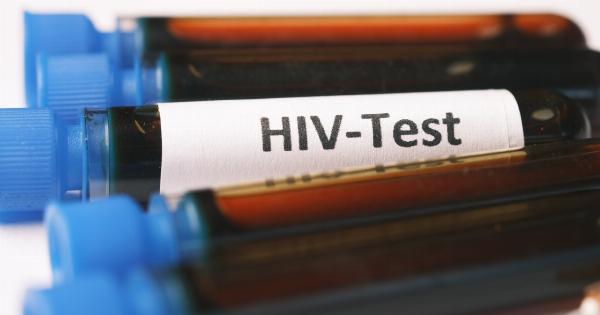HIV/AIDS continues to be a global health epidemic that affects millions of people worldwide. The virus weakens the immune system, making individuals more susceptible to infections and illnesses.
Despite advances in medical research and treatment options, HIV/AIDS remains a significant public health concern. Testing for HIV/AIDS is crucial in identifying and treating the virus, preventing its transmission, and raising awareness about the importance of practicing safe sex and responsible behavior.
The Importance of HIV/AIDS Testing
1. Early Detection and Treatment.
Testing for HIV/AIDS allows for early detection and timely treatment. Early diagnosis gives individuals access to antiretroviral therapy (ART) that can help slow down the progression of the virus.
With early intervention, individuals can lead healthier lives and reduce the risk of developing AIDS-related complications.
2. Prevention of Transmission.
Knowing one’s HIV status is crucial in preventing the transmission of the virus to others.
Individuals who are aware of their HIV-positive status can take precautions and make informed decisions to protect their sexual partners from contracting the virus.
3. Awareness and Education.
HIV/AIDS testing provides an opportunity for individuals to learn about the virus and its transmission.
It helps raise awareness about safe sex practices, including the correct use of condoms, and encourages individuals to maintain healthier lifestyles.
The Different Types of HIV/AIDS Tests
1. Antigen/Antibody Tests.
This type of test detects both HIV antibodies and antigens. Antibodies are produced by the immune system in response to an infection, while antigens are viral proteins.
Antigen/antibody tests are highly accurate and can detect HIV infection in the earliest stages.
2. Antibody Tests.
An antibody test is the most common type of HIV/AIDS test. It detects the presence of HIV-specific antibodies produced by the immune system to fight off the virus. These tests are usually done using blood, oral fluid, or urine samples.
3. Nucleic Acid Tests (NAT).
NAT is a specialized test that directly detects the genetic material (RNA) of the virus.
This test is highly sensitive and is mainly used in situations where early diagnosis is crucial, such as testing newborn babies born to HIV-positive mothers or in cases of suspected acute HIV infection.
When Should You Get Tested?
It is recommended to get tested for HIV/AIDS if:.
1. You have engaged in unprotected sex, especially with multiple partners or with someone whose status is unknown.
2. You have shared needles or syringes for drug use or other activities.
3. You have had a sexually transmitted infection (STI) recently.
4. You are pregnant or planning to conceive.
5. You are experiencing symptoms associated with HIV infection, such as prolonged flu-like symptoms or recurrent infections.
6. You have concerns about your HIV status or have been exposed to the virus.
Why Testing is Essential for High-Risk Groups
Certain groups are considered to be at higher risk of HIV/AIDS infection. These include:.
1. Men who have sex with men (MSM).
2. Individuals who engage in unprotected sex.
3. People who inject drugs.
4. Individuals with multiple sexual partners.
5. Commercial sex workers.
6. Individuals from areas with high HIV/AIDS prevalence.
Regular testing is essential for these high-risk groups to ensure early detection, access to treatment, and prevention of further transmission.
The Importance of Confidentiality and Privacy
When getting tested for HIV/AIDS, confidentiality and privacy play a crucial role:.
1. Confidentiality: Ensuring that test results remain confidential is vital in order to maintain trust and encourage individuals to get tested without fear of stigma or discrimination.
2. Privacy: Testing centers should provide a safe and private environment for individuals to discuss their concerns and receive accurate information about HIV/AIDS.
Overcoming Barriers to Testing
Despite the many benefits of HIV/AIDS testing, several barriers still exist:.
1. Stigma and Discrimination: The fear of being judged or discriminated against due to their HIV status prevents many individuals from getting tested.
2. Lack of Access: Limited access to testing facilities, especially in remote or marginalized communities, hinders individuals from getting tested.
3. Lack of Awareness: Many people do not have sufficient knowledge about HIV/AIDS and the importance of testing.
To overcome these barriers, it is crucial to:.
1. Create awareness through educational campaigns and community outreach programs.
2. Provide easily accessible and confidential testing services in a variety of settings.
3. Address and combat stigma and discrimination associated with HIV/AIDS.
The Role of HIV/AIDS Testing in Eliminating the Epidemic
HIV/AIDS testing is a fundamental component of global efforts to eliminate the epidemic. Achieving the following goals depends on widespread testing:.
1. Diagnose and Treat: Identifying individuals with HIV/AIDS through testing is essential to provide them with life-saving treatment and care.
2. Prevent Transmission: Testing helps prevent the spread of HIV/AIDS by identifying those with the virus and providing appropriate counseling and support.
3. Empower Communities: By promoting HIV/AIDS testing, we empower individuals and communities to take control of their health and make informed decisions.
In conclusion, HIV/AIDS testing plays a significant role in the fight against the epidemic. It is essential for early detection, treatment, prevention, and raising awareness.
By promoting testing, providing accessible services, and addressing barriers, we can work towards eliminating HIV/AIDS and achieving a healthier future for all.





























